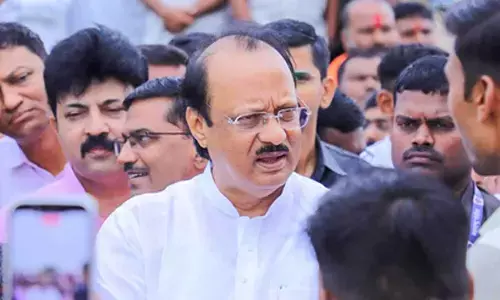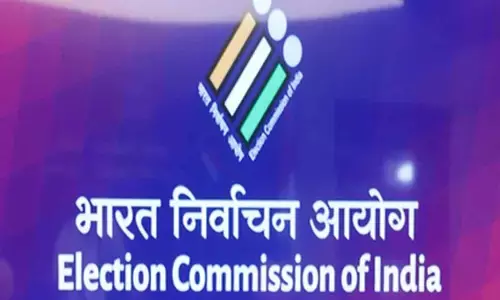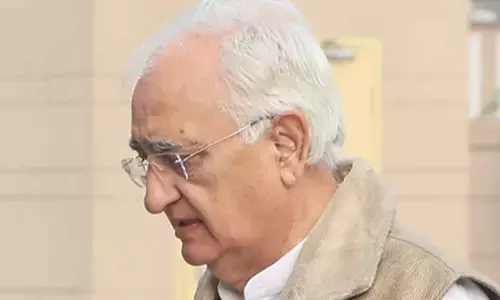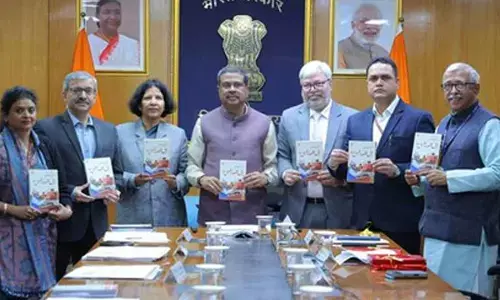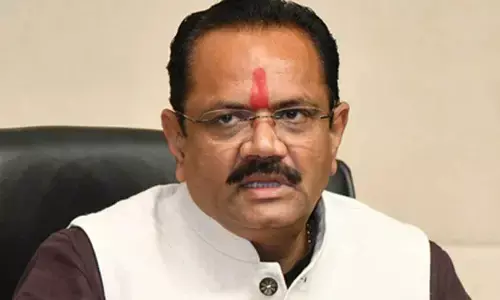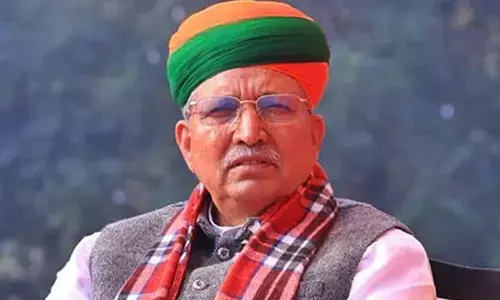Hidden Harmonies: Rediscovering the Melodies of Bharat’s past rituals
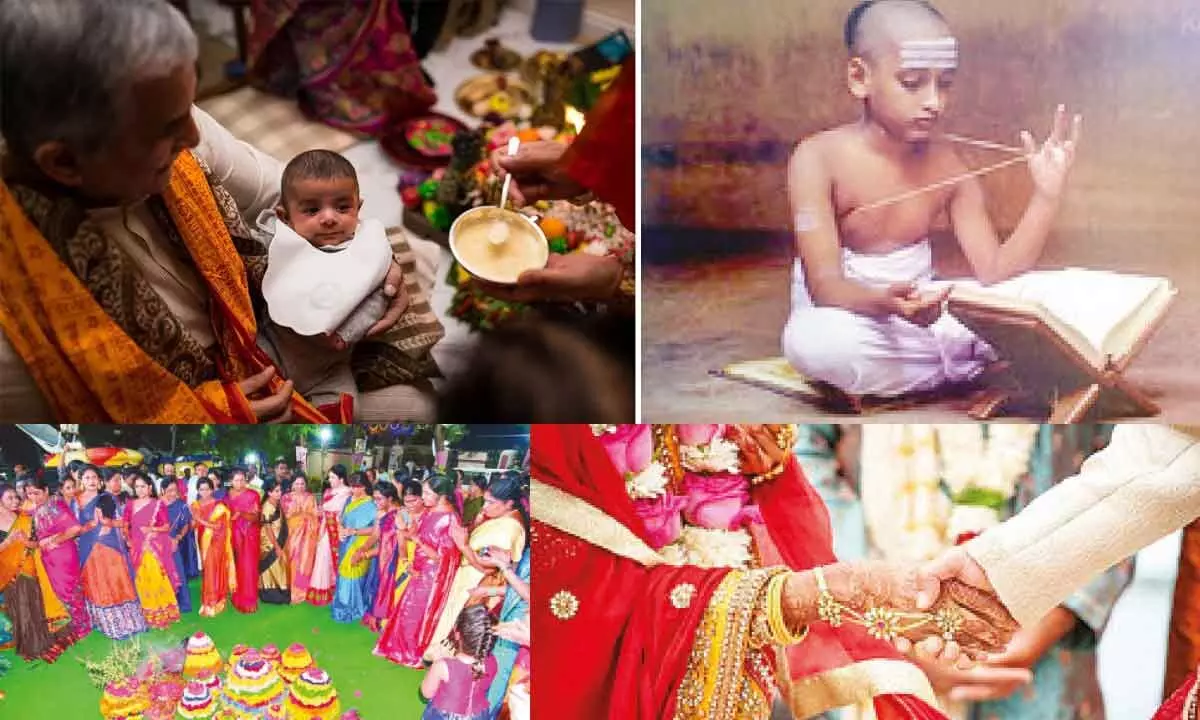
Social rituals are deeply rooted in Bharat’s cultural tapestry, binding communities and marking significant life events. Rich in symbolism and tradition, these rituals transcend religious practices to encompass social customs passed down through generations
Social rituals are deeply rooted in Bharat's cultural tapestry, serve to bind communities and mark significant life events. These rituals are rich in symbolism and tradition, transcending religious practices to encompass social customs passed down through generations. Key social rituals include Namkaran (Naming Ceremony), Annaprashan (First Feeding), Upanayana (Sacred Thread Ceremony), Vivah (Marriage), Antyeshti (Funeral Rites), and Harvest Festivals (e.g., Pongal,Baisakhi).
These rituals have significant significance for cultural identity, continuity, community bonding, life milestones, and moral and ethical framework. They preserve cultural heritage, transmit values, traditions, and beliefs to future generations, foster a sense of identity and continuity, and provide opportunities for community participation and mutual support. They also help individuals and families navigate transitions with community support and guidance.
However, awareness and practice of these rituals vary among contemporary generations due to factors such as rapid urbanization and modernization, globalization, educational and economic factors, and media and technology. Urbanization and modern lifestyles have led to a dilution of traditional practices, while globalization can lead to a hybridization of traditions. Higher education and economic pressures have influenced the extent to which individuals adhere to traditional rituals, but also provide a platform for cultural awareness and revival. Media and technology have a negative impact in preserving traditions, instead of being platforms for cultural exchange, documentation, and virtual participation in rituals. These have created an influence on welcoming the invasion of other cultures at the cost of our cultural roots.
Social rituals are a significant part of the country's cultural fabric, celebrating women's unique roles and milestones in life. These rituals not only honor significant life events but also highlight the cultural importance of women in Bharat which is being narrated in a different way. Key social rituals related to women include Ritusuddhi or Thirandu Kalyanam (Puberty Ceremony), which marks the transition into womanhood, GodhBharai (Baby Shower), Simantonnayana (Pregnancy Ritual), Grha Pravesh (New Bride's Home Entry), Karva Chauth (Day-long Fast for the Well-being and Longevity of Husbands), Teeyan (Festival celebrated by women in Punjab during the monsoon season), and Raksha Bandhan (Sisters Tie a Protective Thread on Brothers' Wrists).
These rituals have several significances, including preserving cultural identity and continuity, fostering strong familial and community bonds, promoting empowerment and education, and providing emotional and social support during significant life transitions. They are particularly important during puberty and pregnancy, as they educate women about their bodies, responsibilities, and societal roles, providing them with knowledge and support.
Despite traditional practices, there is a growing awareness and appreciation for the cultural significance of these rituals in another way round. For instance, the ceremony that gained popularity in recent times in the name of “half saree”, the name itself has no meaning and performed to show the social status rather than adhering to the ritual.
Social rituals are also filled with rich traditional music, and dance, adding joy, solemnity, and a sense of communal participation.
Namakaran ceremonies involve lullabies and devotional songs to bless the newborn and seek divine protection. Some regions include folk songs specific to the community, celebrating the arrival of the baby girl particularly.
Annaprashan (First Feeding Ceremony) is performed with traditional folk songs like "Sohar geet" to celebrate childbirth and early milestones. In Bengal, "Annaprashan songs" include blessings for the child's health and future.
Ritusuddhi or Thirandu Kalyanam (Puberty Ceremony) celebrates a girl's first menstrual cycle, with traditional songs like "ManjalNeerattuVizhaPaattu" being sung to educate the girl about womanhood, fertility, and her responsibilities while celebrating her growth.
Vivah (Marriage) features songs and music from different regions, such as "Mehndi" and "Sangeet" ceremonies in Northern Bharat, "Mangala Snaanam" songs in Southern, and "Gidda" songs and "Boliyan" during the Sangeet ceremony in Punjab.
In Rajasthan, "PehlaPhera" is a significant ceremony where the new bride returns to her parental home for the first time after marriage, with songs like "Bidaai Geet" sung during her departure and return. In Bengal, "Bou Bhaat" or bride's feast" is another ritual accompanied by songs like "Biyer Gaan," celebrating the bride's entry into her new home and family.
GodhBharai (Baby Shower) is a ritual where songs specific to the region are sung to bless the expectant mother and unborn child. Devotional songs and mantras are chanted to protect the mother and child, and informal dancing might occur during family gatherings. In Maharashtra, it's known as the "Dohale Jevan" ceremony. Simantonnayana, invoking deities for a safe delivery and healthy baby, are performed in Tamil Nadu, where women gather to sing "SeemanthamPaattu," ancient folk songs that are melodic prayers for the expectant mother.
During the "Mundan" or first haircut ceremony of a baby is celebrated with songs like "Mundan Geet" are sung in the north to bless the child with a healthy and long life.
Karva Chauth involves traditional songs recounting the legend of Karva Chauth and prayers for the husband's longevity. Dance is typically performed in the evening after the fast is broken.
Teeyan (Teeyan Songs) celebrate womanhood and the monsoon season, filled with joy, teasing, and camaraderie. Traditional Punjabi folk music accompanies the celebrations, with "Gidda" being the main dance form performed during Teeyan.
These songs are passed down through generations and have been an intrinsic part of various ceremonies, yet many are fading into obscurity as modernization takes hold.
Some of the forgotten songs associated with key rituals include baby showers, pregnancy celebrations, welcoming new brides, and marking puberty. Baby showers and pregnancy celebrations are marked by joy and anticipation, with songs sung to celebrate the coming of a new life and offer blessings to the expectant mother.
Preserving forgotten songs requires conscious efforts, including documenting lyrics, recording performances, and encouraging their use in modern celebrations. This helps maintain continuity and connection to our roots, ensuring future generations inherit the rich cultural heritage of these rituals. Through efforts in education, media representation, and community initiatives, these rituals remain relevant and ensure their transmission to future generations. Social rituals are a testament to the country's cultural heritage and communal ethos. With growing awareness and interest in cultural preservation, initiatives in cultural education, media portrayal, and community programs can ensure these rituals continue to thrive and adapt to the times.








